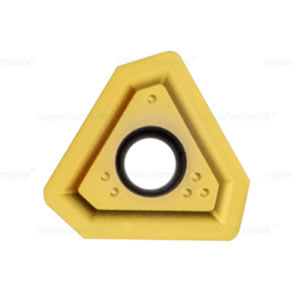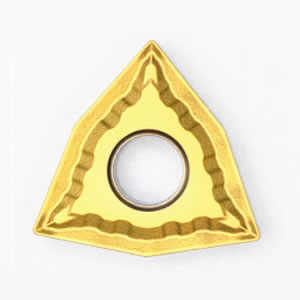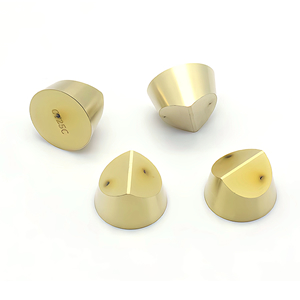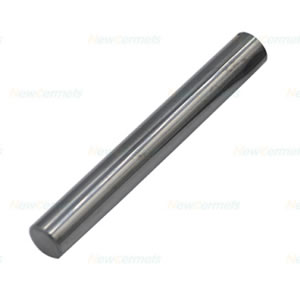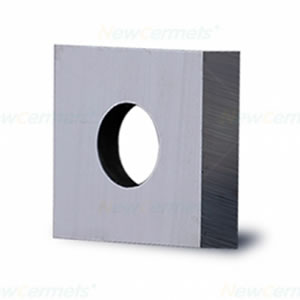Causes and Countermeasures of Cemented Carbide Tool Chipping
Cemented carbide tool chipping causes and countermeasures:
Wear and chipping of Carbide Inserts is one of the common phenomena. When carbide inserts are worn, it will affect the machining accuracy, production efficiency, workpiece quality, etc.; The machining process is carefully analyzed to find the root cause of insert wear.
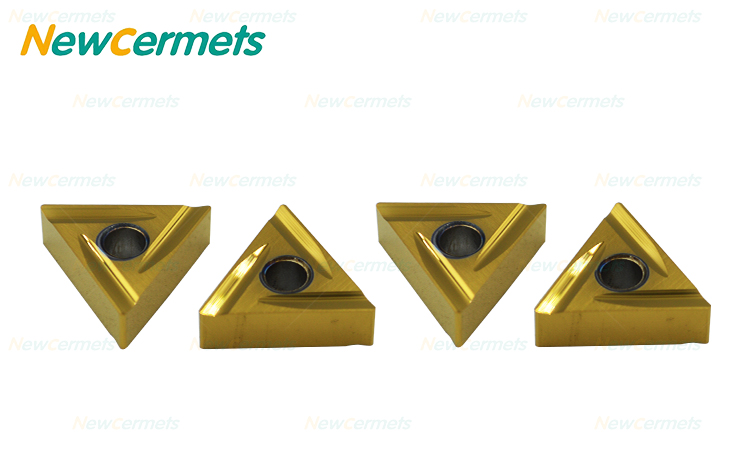
1) Improper selection of blade grades and specifications, such as the thickness of the blade is too thin or the grades that are too hard and brittle are selected for rough machining.
Countermeasures: Increase the thickness of the blade or install the blade vertically, and choose a grade with higher bending strength and toughness.
2) Improper selection of tool geometric parameters (such as too large front and rear angles, etc.).
Countermeasures: Redesign the tool from the following aspects. ① Appropriately reduce the front and rear angles; ② Use a larger negative edge inclination; ③ Reduce the main declination angle; ④ Use a larger negative chamfer or edge arc; ⑤ Grind the transition cutting edge to enhance the tool tip.
3) The welding process of the blade is incorrect, resulting in excessive welding stress or welding cracks.
Countermeasures: ①Avoid using three-sided closed blade groove structure; ②Correct selection of solder; ③Avoid using oxyacetylene flame heating for welding, and keep warm after welding to eliminate internal stress; ④Use mechanical clamping structure as much as possible
4) Improper sharpening method will cause grinding stress and grinding cracks; the vibration of the teeth after sharpening the PCBN milling cutter is too large, so that the individual teeth are overloaded, and the knife will also be hit.
Countermeasures: 1. Use intermittent grinding or diamond grinding wheel grinding; 2. Use a softer grinding wheel and trim it frequently to keep the grinding wheel sharp; 3. Pay attention to the quality of sharpening and strictly control the vibration of the milling cutter teeth.
5) The selection of cutting amount is unreasonable. If the amount is too large, the machine tool will be boring; when cutting intermittently, the cutting speed is too high, the feed rate is too large, and the blank allowance is not uniform, the cutting depth is too small; cutting high manganese steel For materials with a high tendency to work hardening, the feed rate is too small, etc.
Countermeasure: Re-select the cutting amount.
6) Structural reasons such as the uneven bottom surface of the knife groove of the mechanically clamped tool or the excessively long blade sticking out.
Countermeasures: ① Trim the bottom surface of the tool groove; ② Arrange the position of the cutting fluid nozzle reasonably; ③ Add a cemented carbide gasket under the blade for the hardened arbor.
7) Excessive tool wear.
Countermeasures: Change the tool in time or replace the cutting edge.
8) The cutting fluid flow is insufficient or the filling method is incorrect, causing the blade to heat up and crack.
Countermeasures: ① Increase the flow rate of cutting fluid; ② Arrange the position of cutting fluid nozzle reasonably; ③ Use effective cooling methods such as spray cooling to improve the cooling effect; ④ Use * cutting to reduce the impact on the blade.
9) The tool is not installed correctly, such as: the Cutting Tool is installed too high or too low; the face milling cutter adopts asymmetric down milling, etc.
Countermeasure: Reinstall the tool.
10) The rigidity of the process system is too poor, resulting in excessive cutting vibration.
Countermeasures: ① Increase the auxiliary support of the workpiece to improve the clamping rigidity of the workpiece; ② Reduce the overhang length of the tool; ③ Appropriately reduce the clearance angle of the tool; ④ Use other vibration elimination measures.
11) Careless operation, such as: when the tool cuts in from the middle of the workpiece, the action is too violent;
Countermeasure: Pay attention to the operation method.

